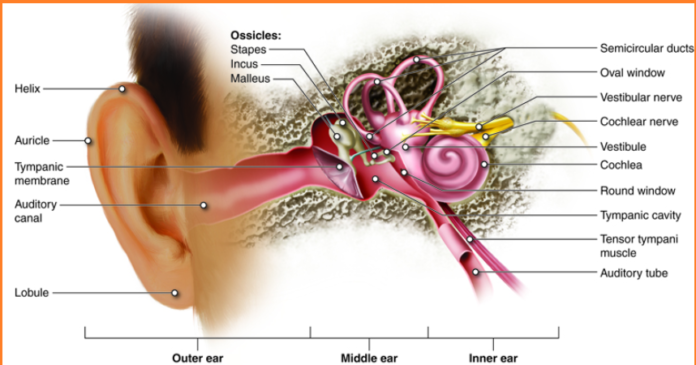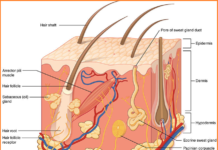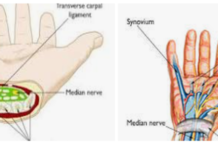Contents
Introduction to Noise-Induced Hearing Loss
Noise-induced hearing loss (NIHL) represents a significant yet frequently ignored health issue, primarily caused by consistent exposure to noise levels exceeding 85 decibels (dB). Unlike other forms of hearing loss that may stem from genetic factors or age-related degeneration, NIHL is directly attributable to environmental noise. This type of hearing loss can manifest as either temporary or permanent, with the former often resulting from short-term exposure and the latter from prolonged or repeated exposure to high noise levels.
Temporary hearing loss, also known as temporary threshold shift (TTS), occurs after exposure to loud sounds and typically resolves within a few hours to several days. It serves as a warning sign that the auditory system is under strain. In contrast, permanent hearing loss, or permanent threshold shift (PTS), arises from continuous exposure to harmful noise levels, leading to irreversible damage to the hair cells in the inner ear. Once these hair cells are damaged or destroyed, they cannot regenerate, resulting in lasting hearing impairment.
Various types of noises contribute to noise-induced hearing loss. These include occupational noises, such as machinery and construction equipment; recreational noises, like music concerts and sporting events; and everyday environmental noises, including traffic and household appliances. The common principle underlying NIHL is that louder noises accelerate the rate of hearing damage. For instance, exposure to sounds at 100 dB can cause hearing damage in just 15 minutes, whereas sounds at 85 dB may take several hours to have a similar effect.

It is crucial to understand noise as an unwanted sound that negatively impacts hearing health. The pervasive nature of noise in our daily lives makes it a ubiquitous threat. By recognizing the sources and effects of noise, individuals can take proactive measures to protect their hearing and mitigate the risk of noise-induced hearing loss. This understanding forms the foundation for appreciating the broader implications of NIHL and underscores the importance of preventative strategies.
The Mechanism of Hearing and Noise-Induced Damage
The human ear is a complex organ that plays a vital role in the sense of hearing. It comprises three main sections: the outer ear, the middle ear, and the inner ear. Each section has a specific function in the process of detecting and interpreting sound.
The outer ear, consisting of the auricle (or pinna) and the ear canal, serves as a funnel to capture sound waves from the environment. These sound waves travel through the ear canal and strike the tympanic membrane, commonly known as the eardrum. The eardrum then vibrates in response to the sound waves.
These vibrations are transmitted to the three tiny bones in the middle ear, known as the ossicles: the malleus (hammer), incus (anvil), and stapes (stirrup). The ossicles amplify the sound vibrations and relay them to the oval window, a membrane-covered opening to the inner ear.
Within the inner ear lies the cochlea, a snail-shaped, fluid-filled structure that converts these mechanical vibrations into electrical signals. The cochlear hair cells, located within the cochlea, play a crucial role in this conversion process. When sound vibrations reach the cochlea, they cause the fluid to move, which in turn causes the hair cells to bend. This bending generates electrical signals that are sent to the brain via the auditory nerve, allowing us to perceive sound.
However, prolonged exposure to intense noise can cause significant damage to these delicate hair cells. Noise-induced hearing loss (NIHL) occurs when the hair cells in the cochlea are damaged or destroyed by excessive noise levels. This damage can lead to a permanent threshold shift (PTS), resulting in irreversible hearing loss. Additionally, exposure to loud sounds can cause a temporary threshold shift (TTS), where hearing ability is temporarily reduced but can recover over time.
Noise-induced damage often affects the hair cells that are responsible for detecting higher frequencies, leading to a loss of sensitivity in these ranges. Understanding the mechanisms by which noise exposure affects hearing is essential for developing effective preventative measures to protect auditory health.
Chemical-Induced Hearing Loss
Chemical-induced hearing loss is a lesser-known but significant risk factor for auditory damage. Ototoxic chemicals, which have the potential to harm the ear and auditory system, can originate from various substances encountered in numerous environments, including workplaces and everyday settings. Among the common ototoxic substances are organic solvents such as styrene and trichloroethylene, heavy metals like mercury and lead, and asphyxiates including carbon monoxide and hydrogen cyanide.
These chemicals can enter the body through inhalation, ingestion, or skin absorption, eventually reaching the inner ear where they can inflict damage. The cochlea, a crucial part of the inner ear, is particularly susceptible to these toxins. Once inside the cochlea, these chemicals can disrupt the function of hair cells, which are essential for transmitting sound signals to the brain. Damage to these hair cells can result in permanent hearing loss, as they do not regenerate.
Moreover, the risk of hearing loss is amplified when exposure to ototoxic chemicals occurs simultaneously with noise exposure. The interaction between noise and these chemicals can have a synergistic effect, meaning the combined impact is greater than the sum of their individual effects. For instance, workers in industries such as manufacturing, painting, and printing are often exposed to high levels of both noise and ototoxic chemicals, placing them at an elevated risk for hearing damage.
Studies have shown that individuals exposed to both noise and ototoxic chemicals experience more severe hearing loss compared to those exposed to noise alone. This compounded risk underscores the importance of implementing comprehensive safety measures in environments where these hazards are present. Protective strategies may include using personal protective equipment (PPE) such as earplugs and respirators, regular monitoring of air quality and noise levels, and enforcing strict occupational safety regulations.
Understanding the detrimental effects of ototoxic chemicals and their interaction with noise is crucial for preventing chemical-induced hearing loss. By acknowledging these risks and taking proactive measures, individuals and employers can help safeguard auditory health and mitigate the long-term consequences of combined exposure to noise and ototoxic substances.
Hearing Conservation Programs and Regulatory Standards
Hearing conservation programs are essential in workplaces where noise exposure presents a significant risk to employees. These programs aim to monitor and manage noise levels to protect workers from hearing loss. Employers play a pivotal role in implementing these programs by adhering to established guidelines and regulatory standards.
One of the primary responsibilities of employers is to monitor noise levels in the workplace. This involves conducting regular assessments to measure the intensity of noise employees are exposed to during their work shifts. The Occupational Safety and Health Administration (OSHA) and the National Institute for Occupational Safety and Health (NIOSH) provide clear guidelines on permissible noise exposure limits. According to OSHA, the permissible exposure limit (PEL) for noise is 90 decibels (dBA) for an 8-hour time-weighted average (TWA). NIOSH, on the other hand, recommends a stricter limit of 85 dBA for the same duration.
Employers must identify employees who are at risk of hearing damage due to noise exposure. This involves not only measuring noise levels but also assessing the duration and frequency of exposure. Employees who are regularly exposed to noise levels exceeding the PEL or NIOSH recommendations require special attention and protective measures.
Implementing protective measures is a critical component of hearing conservation programs. These measures can include engineering controls, such as modifying equipment to reduce noise output, administrative controls like rotating employees to minimize exposure time, and providing personal protective equipment (PPE) such as earplugs or earmuffs. Additionally, educating employees about the risks of noise exposure and the proper use of PPE is vital for the effectiveness of these programs.
Regular hearing tests, known as audiometric testing, are crucial for detecting early signs of hearing loss. OSHA mandates that employers provide baseline and annual hearing tests for employees exposed to noise levels at or above the action level of 85 dBA. Identifying threshold shifts, or changes in an employee’s hearing ability, can help in taking timely corrective actions to prevent long-term damage.
In summary, hearing conservation programs and adherence to regulatory standards are vital in safeguarding employees’ hearing health. By monitoring noise levels, identifying at-risk employees, implementing protective measures, and conducting regular hearing tests, employers can significantly reduce the risk of noise-induced hearing loss in the workplace.





